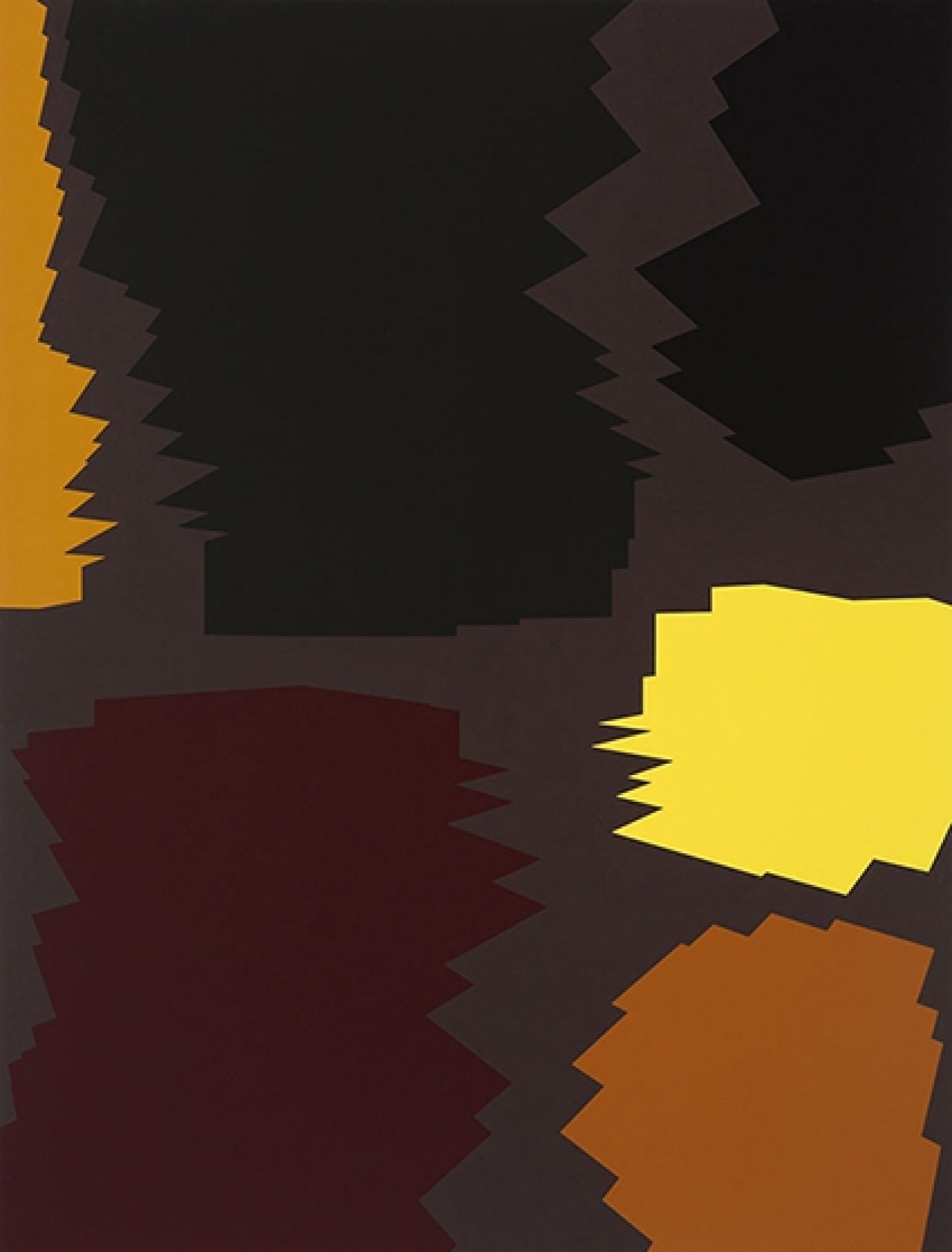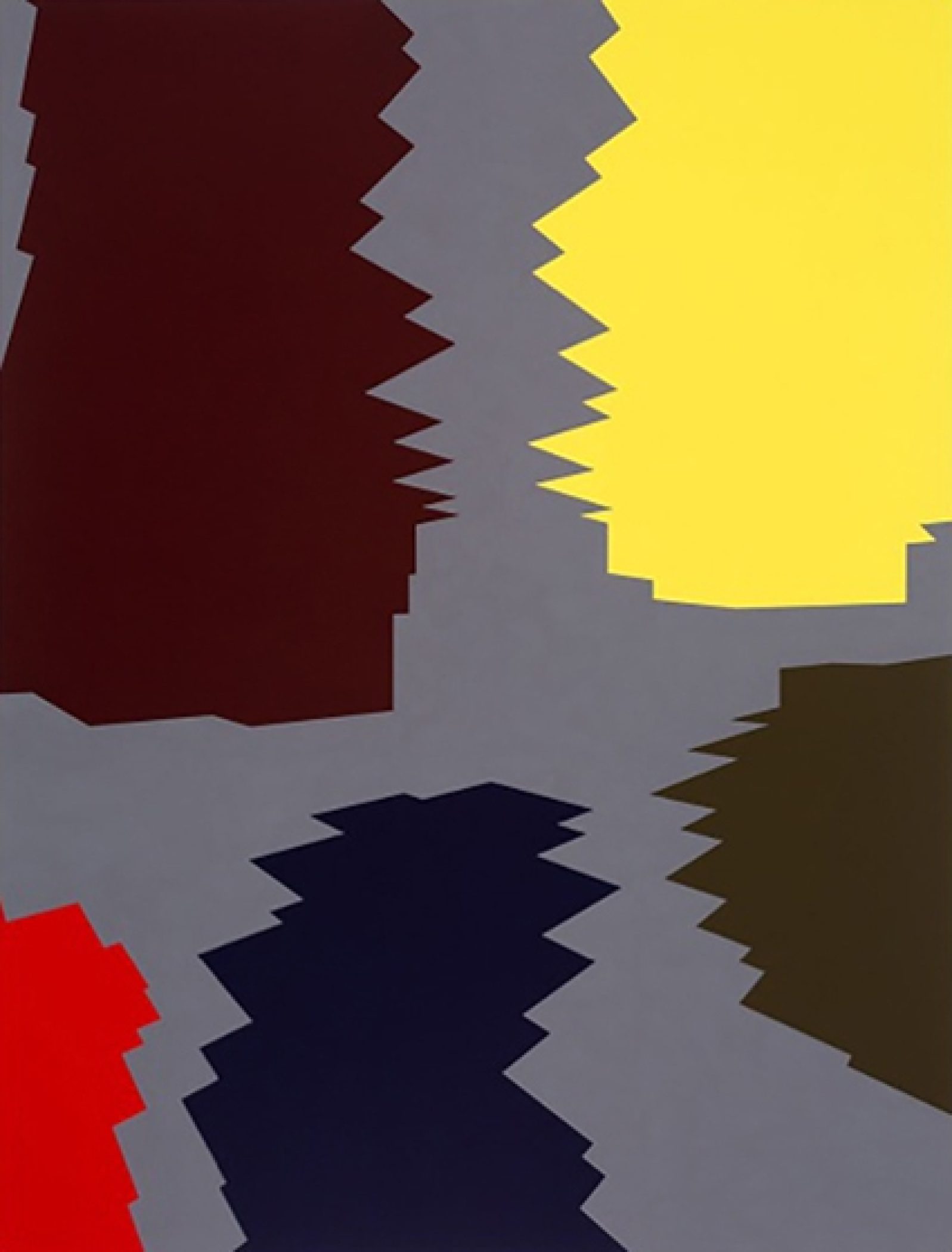Stephen Bram
7th May – 18th June 2016
Anna Schwartz Gallery
Stephen Bram’s practice is defined by innovations in abstract painting and the representation of architectural space. In this series of paintings, Stephen Bram uses a complex perspectival system to generate dynamic and colourful geometric forms. This marks a significant departure in the artist’s visual language, known for hard-edge geometry and a muted palette. Bram’s spectrum of colour acts as a catalyst for shifts in the experience of space and composes an oscillating, multi-dimensional field.
Bram’s unique method of creating painting using vanishing points began in the late 1980’swith two or three points drawn from the space outside the painting onto the picture plane. In this symbiotic relationship between art and architecture, the meeting of lines constitutes the structure of the paintings and delimits their configuration.
As noted by Max Delany: ‘Bram’s use of flat polychrome painting, spatial manipulation and multiple vanishing points amplifies the relationship between abstraction and reality, construction and representation, architecture and design. Executed with mathematical precision Bram’s […] paintings allude to the digital representation and perception of space and architectural form.’1
Over the three next decades, Bram followed rigorous logic and allowed his process to lead him to new territories, including painting directly onto the walls and building interior architectural spaces.
This body of work invokes the practice of likeminded conceptual artists, such as Daniel Buren and Sol LeWitt, who consistently challenge the systems they create as a means to revolutionise their practice and create new meaning.
‘In my work the interest of the fictive space has very much to do with the immediate relationship between the context of the viewer of the work and the work itself and those being somehow tied together by the idea of them both occupying a particular architectural space. One of the things that is compelling about that space is the reflexivity of the viewer’s experience of the image.’2
1. Max Delany, ‘Incident in the Museum 1: Stephen Bram’, Monash Museum of Art, Melbourne, 2004.
2. Stephen Bram interviewed by Sue Cramer, ‘Oberföhringer Straße 156, 2001’, Christopher Kramatscheck (ed), Munich, 2001
Images
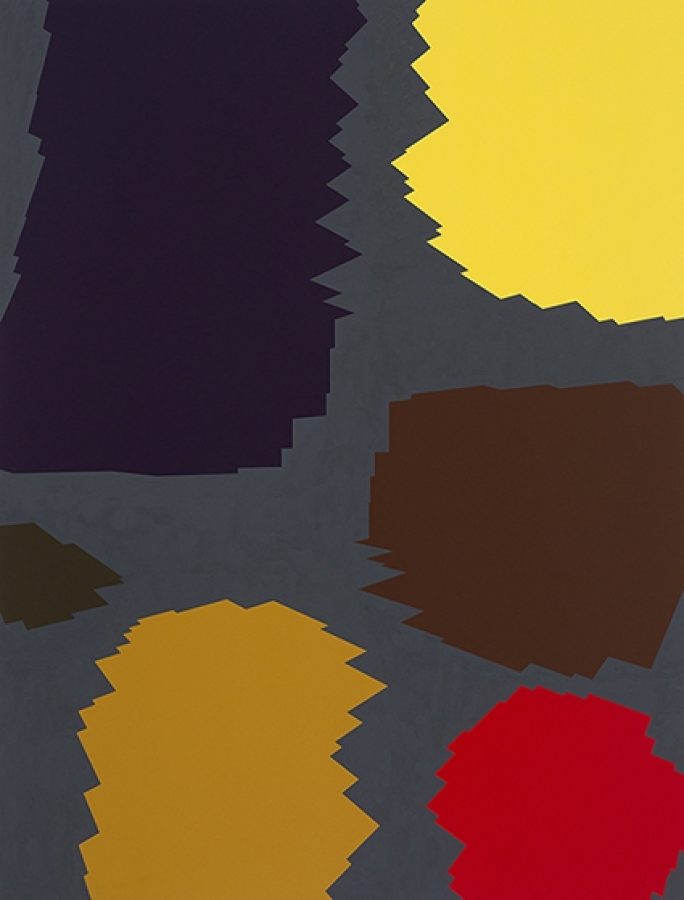
Stephen Bram
Untitled (two point perspective), 2016
Synthetic polymer paint on linen
250 x 190 cm

Stephen Bram
Untitled (two point perspective), 2016
Synthetic polymer paint on linen
250 x 190 cm

Stephen Bram
Untitled (two point perspective), 2016
Synthetic polymer paint on linen
250 x 190 cm
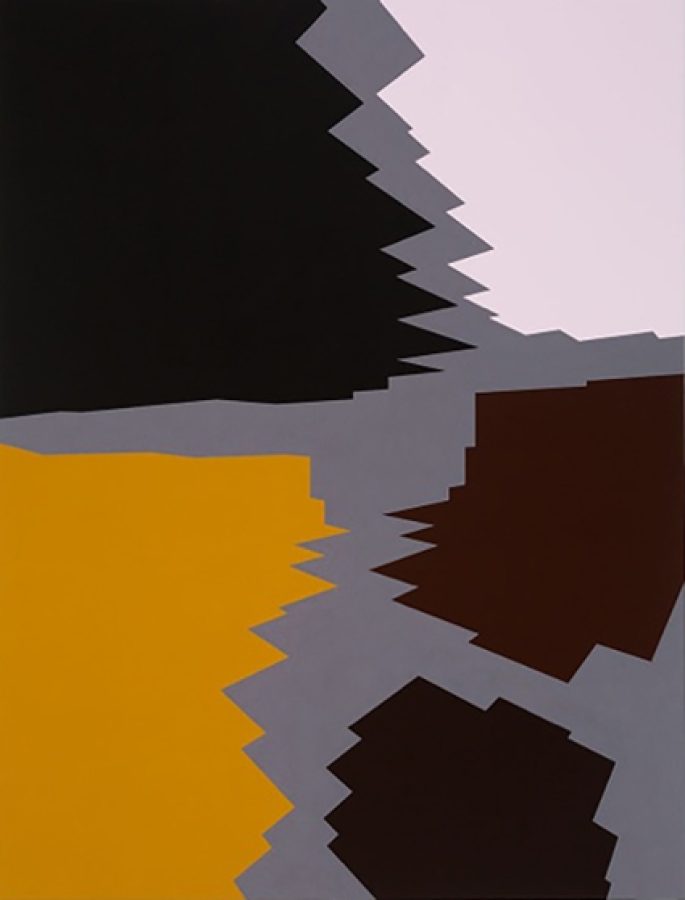
Stephen Bram
Untitled (two point perspective), 2015
Synthetic polymer paint on linen
250 x 190 cm
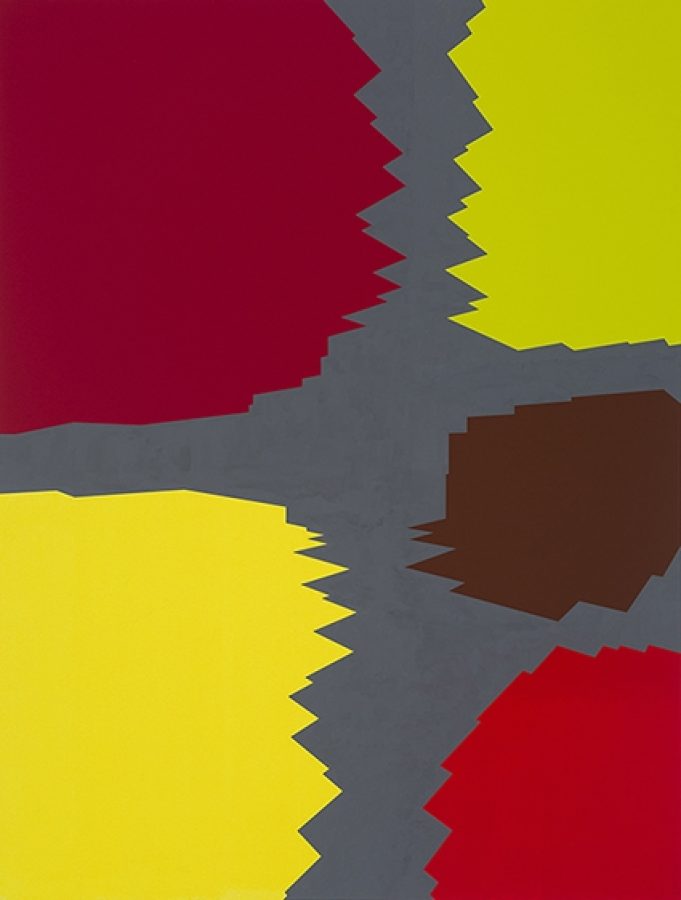
Stephen Bram
Untitled (two point perspective), 2016
Synthetic polymer paint on linen
250 x 190 cm

Stephen Bram
Untitled (two point perspective), 2016
synthetic polymer paint on linen
250 x 190 cm

